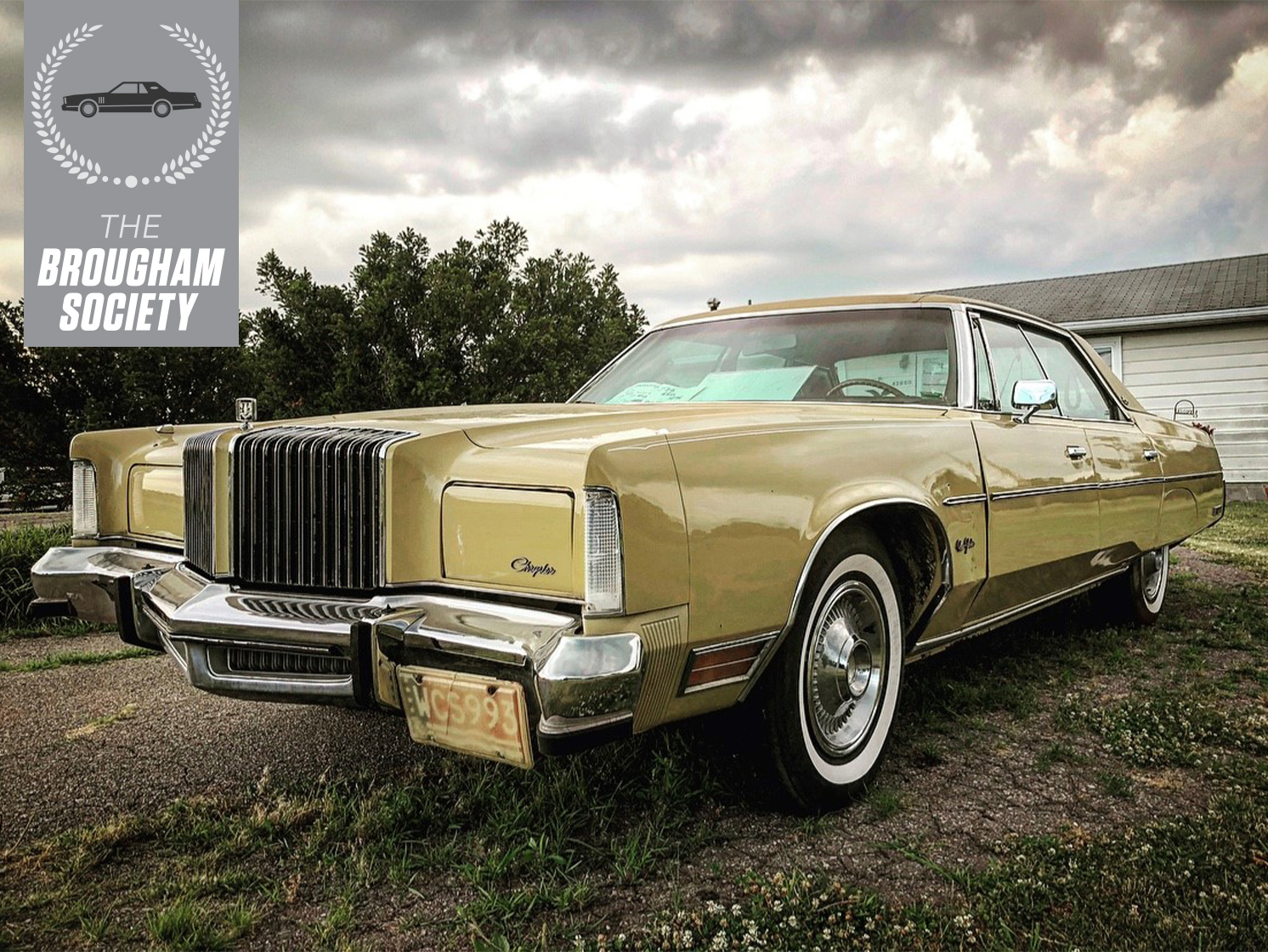The 1977 Chrysler New Yorker was the right car at the wrong time
During the 1970s, business at the Chrysler Corporation must have felt like being on a roller coaster ride. The ups and downs were many, but the latter certainly outnumbered the former. There were certainly some bright spots during the decade, most notably the Cordoba, the Aspen/Volare (for about 10 minutes) and the Omni/Horizon. Unfortunately, the full-sized models—cars that Chrysler was actually good at making—faced an uphill battle as the fuel crisis hit, and they just didn’t catch on with the buying public as well as the large cars from Ford and GM.
After the moderate success of the “fuselage” cars during the late ‘60s and early ‘70s, it was decided that a new large car was necessary, so in the fall of 1973, an new line of big Imperial, Chrysler, Dodge, and Plymouth models debuted for the 1974 model year. Boasting decidedly ornate and formal styling, the big Mopars had to contend with something that also debuted when these cars did: the 1973 fuel crisis. Suddenly, large cars were no longer all that desirable. Seeing how the cars were already in production, Chrysler had no choice but to just go with them, and hope for the best.
Now that we have the bad part of our story out of the way, let’s turn our attention to the good part, mainly the beautiful and luxurious New Yorker.
20190920160041)
20190920160131)
20190920160033)
Imperial sales were on a definite downward trend in the ‘70s, so it was decided to discontinue the Imperial line after 1975. Chrysler came up with “New Yorker Brougham” as a nameplate for the discontinued Imperial. It was actually a good idea, as a lower price tag combined with the more luxurious styling and interior trappings of the Imperial caused sales to increase for 1976 and again for 1977.
A number of people will point to cars like the Cadillac Fleetwood and Lincoln Continental Town Car from this era and proclaim that they were “the” cars when it came to opulence and luxury. Obviously, these people never sat in a New Yorker Brougham. Thick, loose-pillow-look seating, upholstered in either a plush velour or optional Corinthian leather, ensured all-day comfort. In the rear, one would find assist straps, and a padded C-pillar “pillow.” Fold down armrests front and rear, ashtrays and lighters for everyone (remember, it was the ‘70s). An optional Chronometer clock, full power accessories, and stereo sound were all there for the choosing. Chrysler may have been on the brink of collapse, but they certainly didn’t skimp on the luxury.
20190920160100)
For the exterior, old-school touches such as frameless glass, vent windows, and ultra thin B-pillars lent a touch of glamour, along with the crisp, relatively unadorned flanks, waterfall grille (that was still made of metal!), and stand-up hood ornament. Optional road wheels gave a slight air of adventure. All of this elegance was propelled by either a 400- or 440-cubic-inch V-8, mated to a three-speed TorqueFlite automatic transmission.
Our feature car here is one of 45,252 New Yorker Brougham sedans produced for 1977. Pricing on these could top out around $7200, approximately $30,400 when adjusted for inflation. It was, and still is, a lot of car for the money.
1977 was the year that General Motors introduced their scaled-down large cars, and by late 1978, everyone knew that Ford was following suit for 1979. Chrysler Corporation, which was running perilously close to bankruptcy, did the only thing it could: completely restyle their midsizers and introduce them as the new large R-body cars for 1979. While the styling was pleasant, and the fundamentals okay, they would ultimately flop in the market. By 1982, the biggest Chrysler sedans would be minuscule in comparison to these gentle giants—but that is a story for another day.

20190920160024)
20190920160052)
20190920160109)
20190920160122)
20190920160139)
20190920160628)


I was wondering if you still have the 77 Chrysler New Yorker if so how much you want for it
I was wondering if you still have the 77 Chrysler New Yorker if so how much you want for it and have a wonderful Christmas